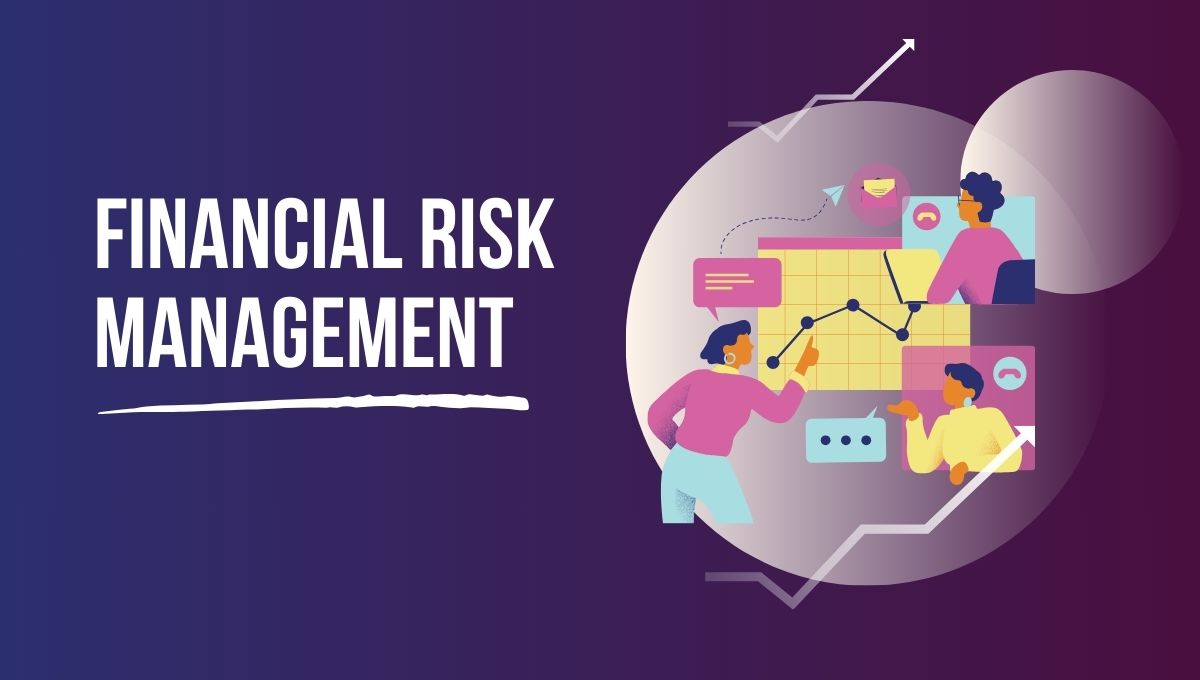Financial risk management is the backbone of any successful business. Every organisation faces risks, some predictable, others entirely unexpected. The key to financial stability isn’t avoiding risks altogether, but learning how to identify, analyse, and mitigate them effectively. When done correctly, risk management can safeguard assets, prevent financial crises, and optimise decision-making processes.
The global financial landscape is ever-changing. Market fluctuations, regulatory changes, and economic downturns all pose potential threats. Companies that fail to prepare often find themselves struggling to survive during crises. Businesses can ensure long-term sustainability and profitability by implementing strong financial risk management strategies.
If you’re serious about mastering financial risk management, structured learning is the way to go. Check out the financial accounting course by Imarticus to gain industry expertise and practical skills to manage risks effectively.
The Fast World of Financial Risk Management
Financial risk management is the process of identifying potential threats to an organisation’s financial health and taking steps to mitigate them. It involves using tools, techniques, and frameworks to assess risks, measure their potential impact, and create strategies to reduce their effects. The ultimate goal is to minimise financial losses, enhance profitability, and ensure business continuity even in times of economic turbulence.
Effective risk management requires a combination of analytical skills, market awareness, and strategic decision-making. Finance professionals must be well-versed in global financial trends, economic indicators, and company-specific risks to create proactive strategies.
The Various Types of Financial Risk Management
Not all risks are the same, and understanding their differences is critical. Some risks stem from external factors like the economy, while others originate within the organisation itself. The most common categories of risk in financial risk management include:
Market Risk
Market risk arises from changes in financial markets. Stock prices fluctuate, interest rates rise and fall, and currency exchange rates shift. These variables can significantly impact a company’s investments and overall financial health. A business heavily invested in volatile markets must develop hedging strategies to minimise exposure to unexpected downturns.
Credit Risk
This type of risk is associated with borrowers failing to repay loans or fulfill financial obligations. When a company extends credit to customers, there’s always a chance they won’t pay on time—or at all. Poor credit ratings can increase borrowing costs, leading to financial instability. Lenders and investors must analyse creditworthiness before approving loans or investments to reduce the chance of default.
Liquidity Risk
Liquidity risk occurs when a company cannot convert assets into cash quickly enough to meet short-term obligations. Without sufficient liquidity, businesses may struggle to pay employees, suppliers, or creditors. Companies with weak liquidity management often face operational disruptions, reduced investor confidence, and financial distress.
Operational Risk
Internal processes, human errors, and system failures contribute to operational risk. A single mistake—whether a data entry error, security breach, or non-compliance issue—can lead to significant financial losses. Organisations must implement internal controls, cybersecurity measures, and employee training programs to mitigate these risks.
Legal and Compliance Risk
New regulations, legal disputes, and non-compliance with industry standards can have costly consequences. Companies operating in multiple jurisdictions must stay informed about regulatory changes to avoid hefty fines and legal battles. Failure to comply with laws governing financial transactions, corporate governance, and tax regulations can damage a company’s reputation and financial standing.
Key Financial Risk Management Strategies
Managing financial risks requires a well-structured approach. Companies typically use the following financial risk management strategies:
Risk Avoidance
One of the most straightforward ways to manage financial risk is by avoiding it altogether. If a business identifies an overly risky investment, it may choose not to proceed with it. While this approach minimises exposure, it also limits growth opportunities. Therefore, businesses must weigh the potential rewards against the risks before making decisions.
Risk Mitigation
Instead of avoiding risk, many companies focus on reducing its impact. Diversification is a common mitigation strategy—spreading investments across different asset classes reduces the likelihood of major losses. Hedging is another technique used in financial markets, where businesses use derivatives to protect against price fluctuations.
Risk Transfer
Transferring risk involves shifting potential financial burdens to another party. Insurance policies are a prime example—companies pay premiums to protect themselves against unexpected losses due to disasters, lawsuits, or business interruptions. Businesses may also outsource high-risk operations to third-party vendors to reduce internal exposure.
Risk Acceptance
Some risks are unavoidable. Instead of eliminating them, businesses accept the risks and prepare for potential losses. This strategy is often used when the cost of mitigating a risk outweighs the potential impact. Companies that accept risks must allocate capital for contingencies and develop strategic plans to minimise the damage if the risk materialises.
Financial Risk Analysis Tools and Techniques
Financial risk analysis relies on quantitative and qualitative methods to assess potential threats. Organisations use various tools to evaluate and predict risks:
| Tool | Purpose |
| Value at Risk (VaR) | Measures potential losses in investments |
| Monte Carlo Simulation | Predicts different financial scenarios |
| Stress Testing | Assesses financial stability under extreme conditions |
| Credit Scoring Models | Determines creditworthiness of borrowers |
| Financial Ratios | Analyses company liquidity and solvency |
Financial Forecasting and Risk Management
Financial forecasting is a critical component of risk management. By analysing historical data and market trends, companies can make informed predictions about future financial conditions. Accurate forecasts enable businesses to allocate resources effectively, anticipate potential risks, and make strategic investment decisions.
Cash flow projections, market trend analysis, and budgeting all play a role in mitigating risks. Organisations that prioritise financial forecasting are better equipped to handle economic downturns and unforeseen challenges.
The Role of Technology in Financial Risk Management
Advancements in technology have revolutionised financial risk management. Artificial intelligence (AI), blockchain, and big data analytics have made risk assessment more accurate and efficient.
AI-driven algorithms analyse large datasets to detect fraudulent transactions and predict credit risks. Blockchain enhances security in financial transactions by providing a tamper-proof record of activities. Big data analytics processes vast amounts of financial information to identify hidden risk patterns and optimise decision-making.
Financial Risk Management in Investment Banking
Investment banks operate in highly volatile markets, making risk management essential. Banks implement strategies such as portfolio diversification, hedging through derivatives, and capital adequacy planning to maintain financial stability. They also conduct rigorous stress tests to ensure they can withstand economic shocks.
Challenges in Financial Risk Management
Despite advancements in risk management, businesses still face significant challenges. Market unpredictability, regulatory compliance, cybersecurity threats, and global economic instability all contribute to financial uncertainty. Companies must stay ahead of emerging risks by continuously updating their strategies and investing in robust risk management frameworks.
The Future of Financial Risk Management
The financial landscape is evolving, and risk management must adapt accordingly. AI-driven analytics, sustainable finance risk management, and cybersecurity advancements will shape the future of the industry. Companies that embrace innovation and proactive risk assessment will remain resilient in an unpredictable economic environment.
Conclusion
Mastering financial risk management is essential for long-term business success. By understanding different types of risks, implementing effective strategies, and leveraging technology, organisations can navigate financial challenges with confidence. If you’re looking to build expertise in risk management, check out the Postgraduate Financial Accounting and Management Program for a comprehensive learning experience.
Frequently Asked Questions
What is financial risk management?
It is the process of identifying, analysing, and mitigating financial risks to ensure business stability.
What are the main types of financial risk management?
Market risk, credit risk, liquidity risk, operational risk, and legal risk are the primary types of financial risk we deal with in financial risk management.
How can businesses manage financial risks effectively?
Through risk avoidance, mitigation, transfer, and acceptance strategies.
How does technology help in financial risk management?
AI, blockchain, and big data analytics improve risk assessment and enhance financial security.


